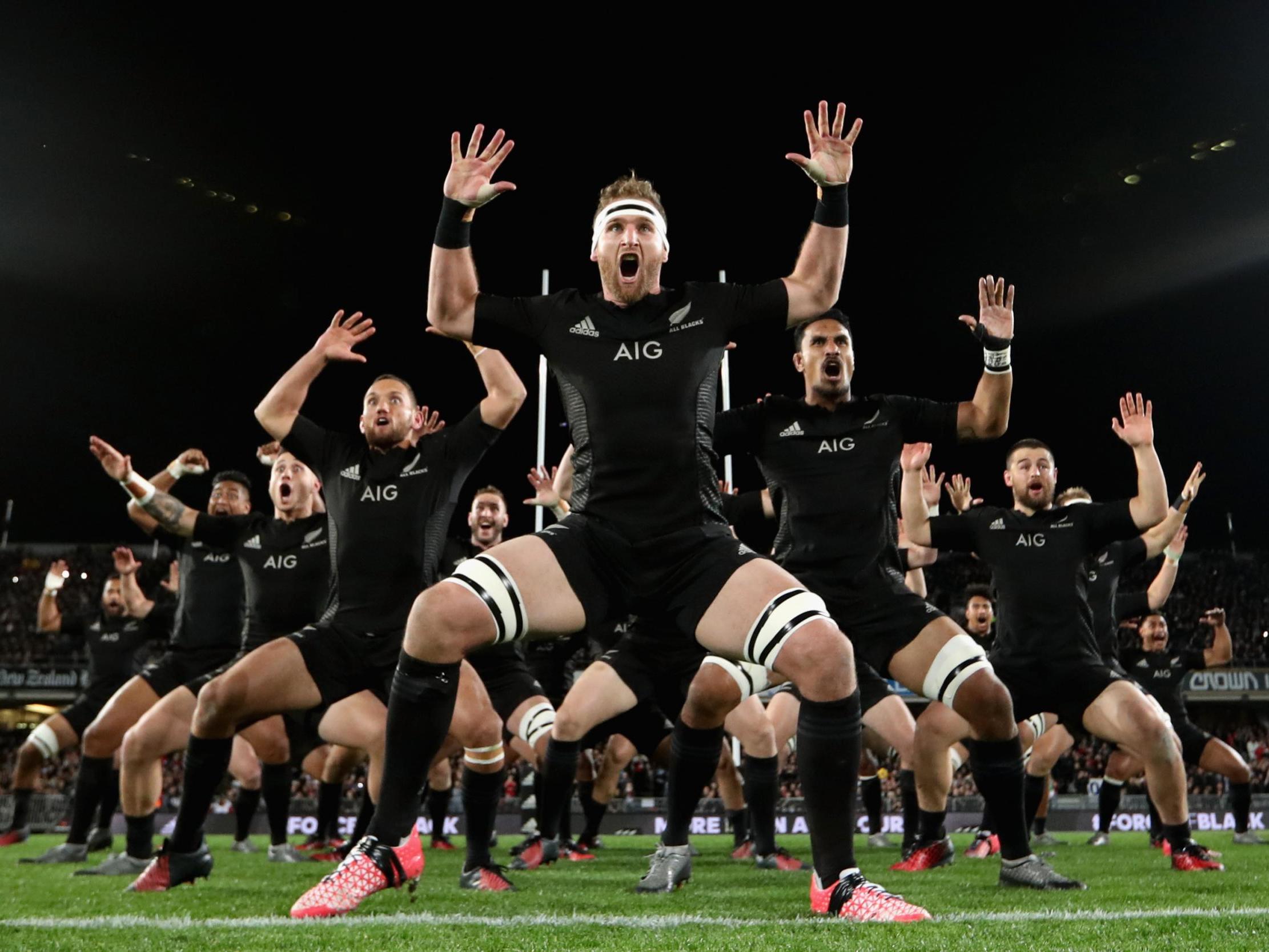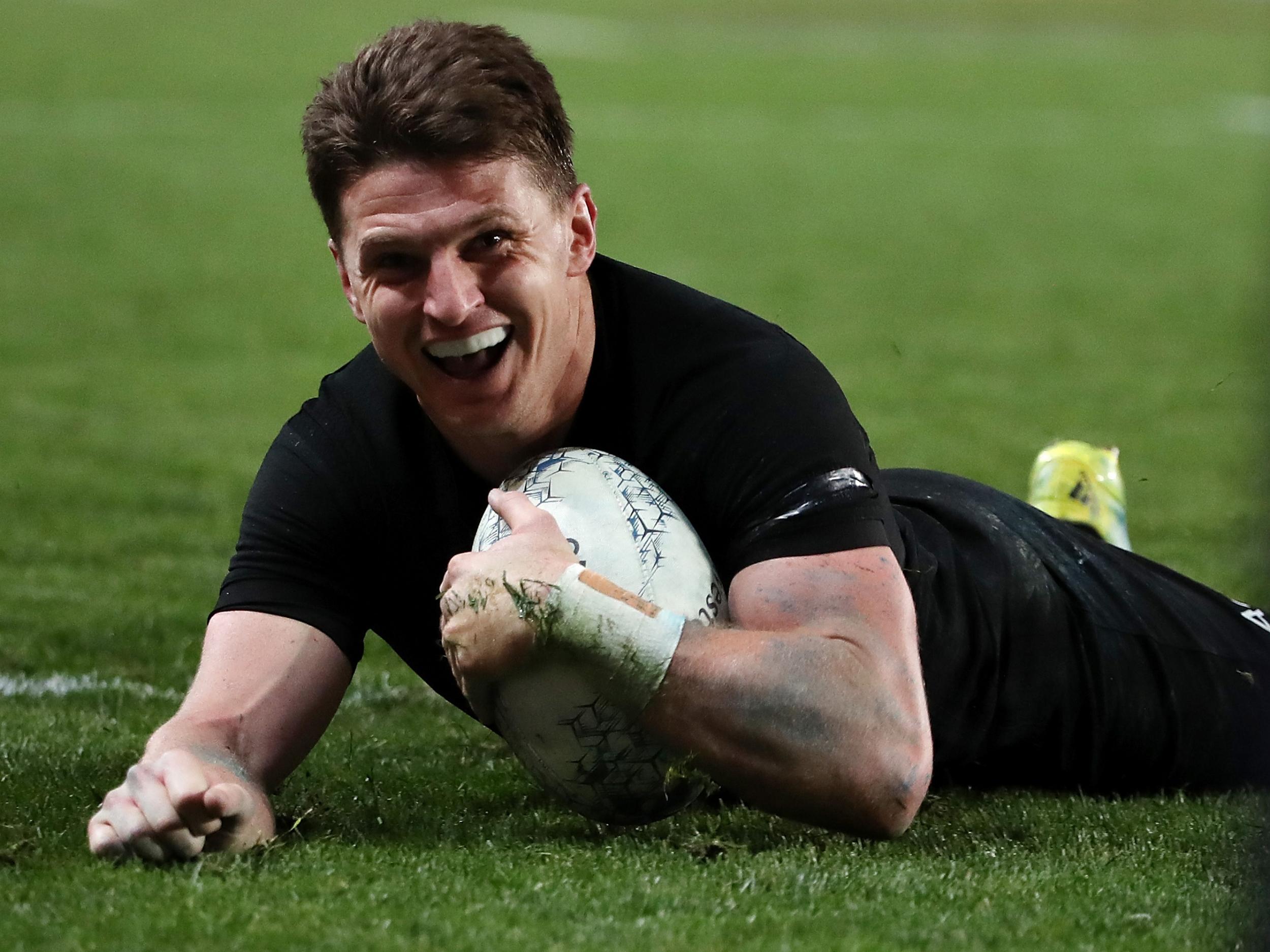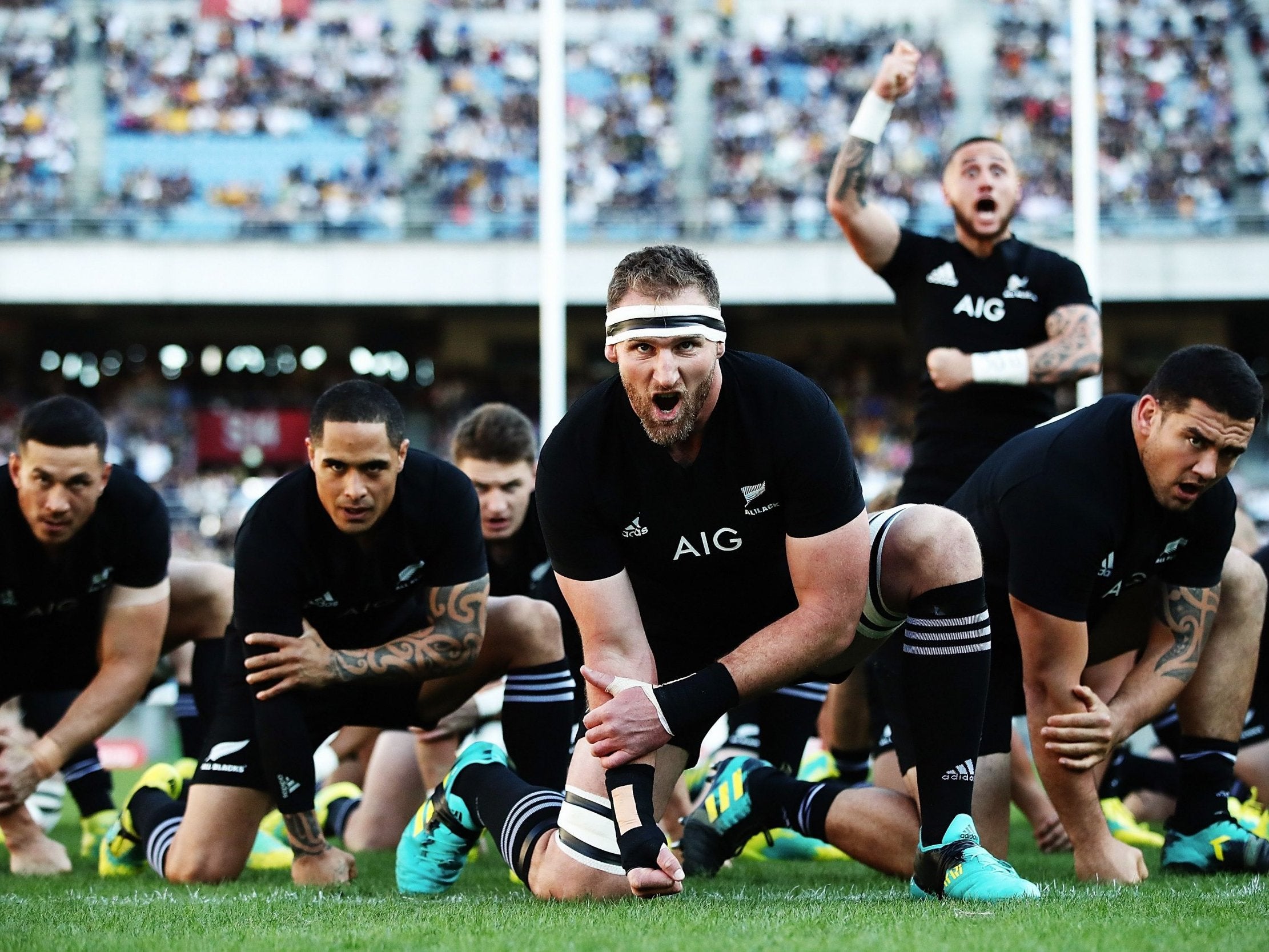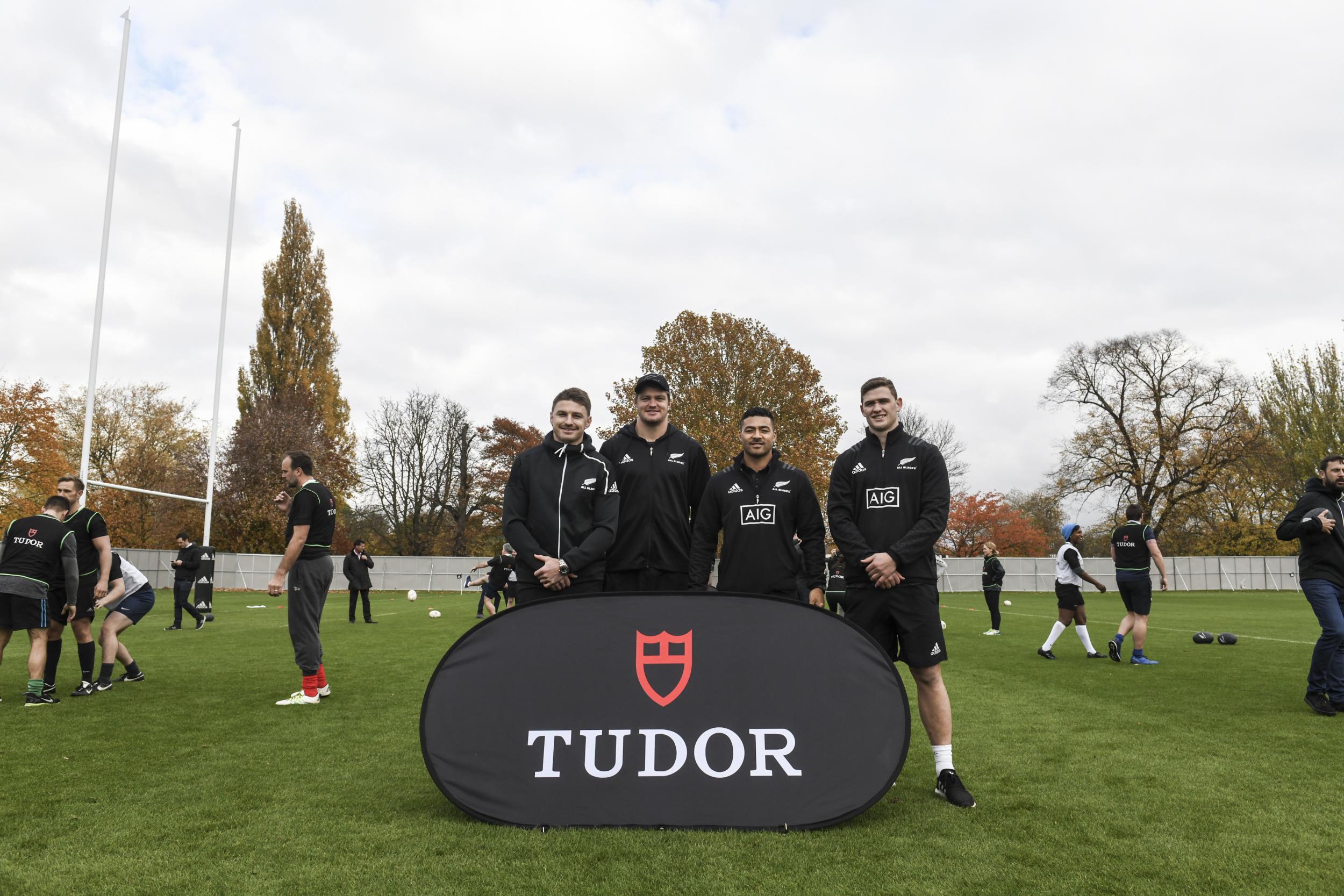Time to appreciate, rather than dissect, the mystifying ‘aura’ of the All Blacks
The Independent goes behind the scenes with the All Blacks. And at closer inspection, it seems there's much more than meets the eye to sport's greatest dynasty


Your support helps us to tell the story
From reproductive rights to climate change to Big Tech, The Independent is on the ground when the story is developing. Whether it's investigating the financials of Elon Musk's pro-Trump PAC or producing our latest documentary, 'The A Word', which shines a light on the American women fighting for reproductive rights, we know how important it is to parse out the facts from the messaging.
At such a critical moment in US history, we need reporters on the ground. Your donation allows us to keep sending journalists to speak to both sides of the story.
The Independent is trusted by Americans across the entire political spectrum. And unlike many other quality news outlets, we choose not to lock Americans out of our reporting and analysis with paywalls. We believe quality journalism should be available to everyone, paid for by those who can afford it.
Your support makes all the difference.At first glance, there’s nothing particularly extraordinary about them. You’ve got Dalton Papalii. 6ft 3in. Broad as a barn door. Sporting a small cut on the bridge of his nose. Likes the words ‘bro’ and ‘sweet’. Then there’s Richie Mo’unga. Short back and sides. Short in stature, too. 5 ft 7in. But bulky. Lastly, two of the Barrett brothers. First, Scott. The taller of the two – a giant of the game. Compared to his brother, he seems somewhat more perplexed by the scenes unfolding in front of him. A man of few words, happy but not particularly enthused to answer our questions as a light drizzle falls on the lush grounds of The Lensbury.
It’s his brother Beauden, older by three years, who’s most at ease. As the greatest fly-half on the planet, and successor to Dan Carter, the prospect of running a training session for half a dozen journalists and corporate collars doesn’t faze him. Water off a duck’s back, and all that.
Away from the cameras, away from the intense glare of an expectant nation and its people, these, then, are the All Blacks – but rarely as we’ve seen them before. It may be the nature of the occasion and the setting – the trees tinged a light golden brown, the River Thames murmuring away off in the distance – but there’s something distinctively, well, normal about them.
There’s no ‘aura’ – a word which is brought out of cold storage, heated up and drizzled across the All Blacks every time they return to these shores – about this select group of players. Not yet at least. Leading their separate sessions – Beauden on kicking, Scott on lineouts, Mo’unga on hands, Papalii on tackling – it’s easy to forget what these men are capable of, what glorious success they’ve tasted, what heights they’ve scaled.
There’s none of that. Instead, there’s humility. There’s patience. There’s a willingness to engage with those among us who, even after their words of wisdom, consider the ball to be the wrong shape. There’s Papalli cracking a joke about the cut on his nose (a mistimed tackle on one of the big boys, apparently). There’s Mo’unga – much to the probable horror of Steve Hansen – lurking out on the wing during the game of touch. There’s Beauden Barrett being Beauden Barrett, casually dinking the ball onto the crossbar from distance as others try, and fail, to follow suit.
But, look a little closer, and the penny soon drops. You start to notice the small things which, initially, weren’t so obvious. The razor-sharp precision of Mo’unga’s passes. The explosive, raw power of Scott’s gravity-defying lineouts. The mind behind Beauden. A watchmaker dressed in peacock’s feathers, there’s both detail and style to his kicking – from the way he positions his right hand on the ball for a pop over the top to the way it gracefully tumbles through the grey sky, falling perfectly to bounce back into his embrace.

Time, I think, to bring the ‘aura’ back out again. For there is no denying the brilliance of the All Blacks. They are, quite simply, sport’s greatest dynasty. Other households come and go with the passing of time. Manchester United. The New York Yankees. The Kangaroos. The Boston Celtics. Their dominance ebbs and flows, beating back and forth against the shore, leaving their imprint in the sand before nature quietly takes hold.
Not the All Blacks. They are seemingly timeless. A constant, never-ending stream of greatness – one that has transcended the dictating conventions of sport and been elevated to that most rarefied of states. Even between 1999 and 2007, when they failed to lift the Rugby World Cup despite the immeasurable talent among their ranks, thus earning the moniker of ‘chokers’, the All Blacks continued to rest atop the pinnacle of rugby.

Their supremacy is backed up by the stats. In their 125-year history, the All Blacks have won more than three-quarters of the matches they’ve played – more than any other major national sports team. They’ve lost just six times in their last 79 games. Since the inception of the Tri-Nations in 1996, including the Rugby Championship after Argentina were added in 2012, New Zealand have won 16 of the 23 southern hemisphere tournaments. Against England specifically, their last defeat came in December 2012. Six long years of supremacy over the Red Rose.
What, then, is behind such longevity? More than 100 years after the ‘Originals’, how is that the All Blacks continue to lead the way? What separates them from the rest? Capturing the essence of the All Blacks, and then explaining it, is no easy feat. Many have tried. Thousands of words and articles have been dedicated to deciphering the legend of the All Blacks. Pundits have had their say. So, too, have former and current players. Even Beauden Barrett couldn’t really find the words. “It’s hard to nail it down, mate,” he tells The Independent. “There are a number of things. There’s no single reason.”

Many will point to New Zealand’s cultural dedication to rugby. It’s written into the country’s DNA, they say. You can’t get away from it. Others highlight the nation’s school system – as embodied by the famous 150-year-old Wellington College – and its relationship with professional rugby. Then there’s the influx of talent from the Pacific Islands communities, both inside and outside New Zealand. And don’t forget the All Blacks’ prevailing culture of egalitarianism, or, in other words, the side’s “no dickheads” policy. Take into account the country’s ability to nurture its extraordinary talent, as well as its high standard of coaches – seven of the 20 teams playing at the 2015 World Cup employed a Kiwi coach – and their success should be pretty self-evident.
In reality, though, there is no single, defining explanation. Rationale and reason can only get us so far. But this is what it’s all about. There would be no mystique, no ‘aura’ to the All Blacks if we had all the answers. Their appeal, in so many ways, lies in the knowledge that we will never truly comprehend the spectacles they provide. Time, then, to abandon our fruitless attempt to master their mastery. After all, when has a work of art needed to be understood to be appreciated?
Eddie Jones, of all people, may have been on to something when, in reference to the veneration teams show the All Blacks, he said: “They sit there, they eat popcorn, have a can of Pepsi and they watch the movie.” England will certainly have been advised against doing so but, for the rest of us, it’ll more than do. So come, gather round, put your feet up and enjoy the film in all its unfathomable, incalculable glory. Just try not to overthink it.
Beauden Barrett and the All Blacks are brand Ambassadors of Swiss watch brand Tudor. For more information visit www.tudorwatch.com
Join our commenting forum
Join thought-provoking conversations, follow other Independent readers and see their replies
Comments